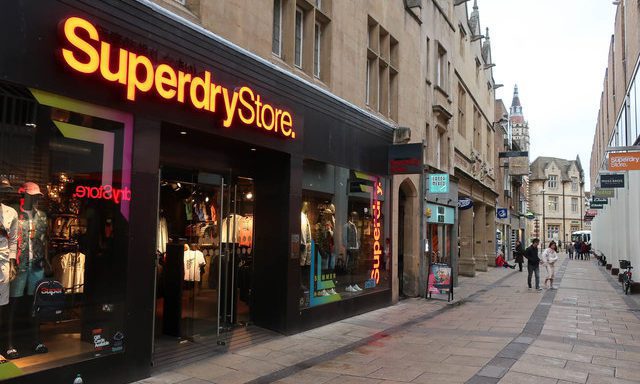The trials and tribulations of Superdry
Superdry has faced a number of issues in recent years and had employed a number of strategies to try and combat them

Register to get 1 free article
Reveal the article below by registering for our email newsletter.
Want unlimited access? View Plans
Already have an account? Sign in
Back in the early to mid 2010s Superdry was a highly popular and successful clothes brand. The company grew hugely in this time posting a profit before tax of £51.4m in its end of year results for 2012.
However, more recently the brand has struggled highlighted in its most recent financial statement which showed the company posted a loss before tax of £13.6m.
As a result of this turmoil Superdry has taken a number of steps to address its decline and there have been a number of reports around founder Julian Dunkerton taking the company private in an attempt to save it.
The issues
The main issue facing all companies at the moment is the cost of living crisis. Consumers are tightening their belts and spending less and labour and material costs are increasing.
This is doubly bad for companies such as Superdry as ‘luxury’ clothing is likely to be one of the first things people cut back on in times of recession.
As Nicholas Found from Retail Economics explains: “In terms of the backdrop, although the UK may avoid a recession this year, consumers are adopting recessionary behaviours. Shoppers feeling the pinch from persistent double-digit inflation are having to reevaluate their spending, focusing on shopping around promotional periods and key calendar events, which is ultimately seeing a cut back in volumes bought.
“At the same time, on the operations side for retailers, fixed and variable costs have stepped up significantly, whether that’s the cost of labour, energy or materials – the list goes on. While some of these costs are softening into the second half of the year, they remain heightened and such expenses are having to be passed onto shoppers at a time when they’re unable or less willing to absorb them,” he states.
But this is not the only issue facing Superdry. The real issue the company has is its declining relevance as a brand. As previously mentioned Superdry was a very popular brand some ten years ago but as fashions change and consumers get old Superdry has failed to change with them.
“In an increasingly competitive fashion market, retailers such as Superdry at the premium high street end of the market that ultimately aren’t luxury face the risk of losing ground to more value-oriented rivals as cash-strapped shoppers tighten their belts.
“Additionally, Superdry faces issues with the relevance of its brand image and offer, and the retailer will have to continue to drive sustainability and plough investment into social media and digital marketing to tap into a younger and more affluent consumer,” Found adds.
The solutions
Superdry has tried a number of strategies this year to address its shortcomings. Back in March the company appointed advisers such as Bantry Bay to come up with a cost cutting plan. The company also received an £80m loan from Bantry Bay in December 2022.
Alongside this the company agreed to sell its Asia Pacific IP to South Korean firm Cowell Fashion Company for an upfront fee of £40.7m.
The company also announced earlier in May that it would attempt to raise £12m in share sales. It issued 15.7m new ordinary shares at 76.3p each and was able to raise £11.1m through the sale of new shares and £0.9m via a retail offer.
“A £12m share sale might not be sufficient to address the larger issues facing Superdry, which is why Superdry also plans to reduce costs by some £35m. While a buyback can signal confidence in the longer term position of the business, the company fundamentally needs to focus on the execution of its long term strategies to improve its performance,” says Found.
Takeover rumours
Throughout this whole process there have been persistent rumours that founder Dunkerton was considering taking the business private.
In December there were rumours that Dunkerton had held talks with various private equity firms centred around financing a takeover of the company.
In February he denied that he was thinking about taking the company private in an official regulatory statement which prevents him from doing so for at least six months however the takeover rumours have not subsided.
The future
So it remains to be seen what the future holds for Superdry. As the cost of living crisis begins to ease, that may ease some of the economic headwinds faced by the company but its problems with business strategy and relevance may still persist.
However, there are still a number of options available to the company. Dunkerton may finally decide to take the business private where it is less beholden to shareholders or the company may embrace the digital age and completely change its model.
“Adapting to the rapidly evolving consumer needs while shoring up its balance sheet will be critical for Superdry to secure its position in the market and claw back some of its former glory, which will likely take the shape of a more digitally-focused player at a smaller scale with lower inventory and SKUs compared to its peak pre-pandemic,” states Found.







